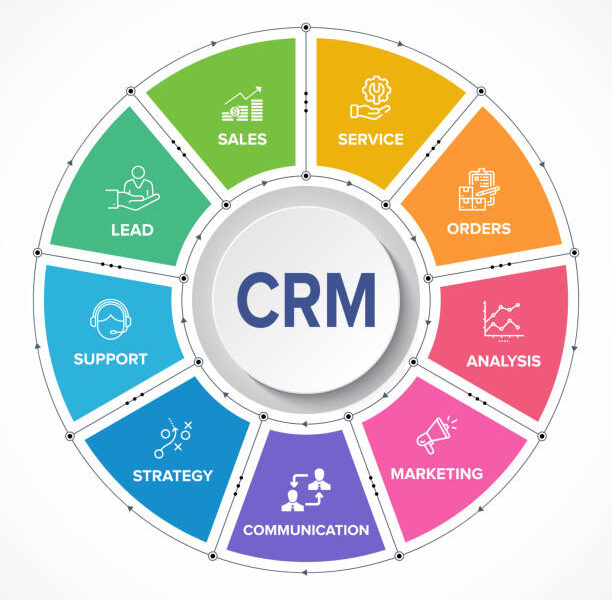A Beginner’s Guide to Automating Your Workflow with CRM Tools
In today’s fast-paced business environment, efficiency is key to staying competitive. For many organizations, automating workflows using Customer Relationship Management (CRM) tools has become an essential strategy for enhancing productivity and improving customer interactions. This guide will provide beginners with a comprehensive overview of how to automate workflows using CRM software, the benefits of automation, and best practices for successful implementation.
Understanding Workflow Automation
What is Workflow Automation?
Workflow automation refers to the process of streamlining and automating repetitive tasks within a business process. By using technology to perform these tasks, organizations can reduce manual effort, minimize errors, and improve overall efficiency. In the context of CRM tools, workflow automation helps manage customer interactions, sales processes, and marketing campaigns seamlessly.
Why Automate Your Workflows?
Automating workflows can lead to significant improvements in various areas of your business:
- Increased Efficiency: Automation reduces the time spent on repetitive tasks, allowing employees to focus on more strategic activities.
- Improved Accuracy: Automated processes minimize the risk of human error, ensuring that data is entered consistently and correctly.
- Enhanced Collaboration: Workflow automation facilitates better communication among team members by providing clear task assignments and tracking progress.
- Better Customer Experience: By streamlining processes, businesses can respond to customer inquiries more quickly and effectively.
Key Features of CRM Tools for Workflow Automation
When selecting a CRM tool for workflow automation, consider the following key features:
1. Customizable Workflows
A good CRM should allow you to create customizable workflows that align with your specific business processes. This flexibility ensures that you can tailor automation to meet your unique needs.
2. Integration Capabilities
Your CRM should integrate seamlessly with other tools and applications used within your organization. This integration allows for a smooth flow of information between systems, enhancing overall efficiency.
3. Task Management
Effective task management features enable you to assign tasks, set deadlines, and track progress within automated workflows. This ensures that everyone is aware of their responsibilities and deadlines.
4. Reporting and Analytics
Robust reporting and analytics capabilities allow you to measure the effectiveness of your automated workflows. By analyzing data, you can identify areas for improvement and make informed decisions.
5. User-Friendly Interface
A user-friendly interface is essential for ensuring that your team can easily navigate the CRM system and utilize its automation features effectively.
Getting Started with Workflow Automation in CRM Tools
Step 1: Identify Processes to Automate
Before diving into automation, identify the processes within your organization that would benefit from workflow automation. Common areas include:
- Lead Management: Automate the process of capturing leads from various sources and assigning them to sales representatives.
- Customer Follow-Ups: Set up automated reminders for follow-ups based on customer interactions.
- Email Campaigns: Automate marketing emails based on customer behavior or specific triggers.
- Onboarding New Customers: Streamline the onboarding process by automating welcome emails and introductory materials.
Step 2: Choose the Right CRM Tool
Selecting the right CRM tool is crucial for successful workflow automation. Consider factors such as:
- Features: Ensure the CRM offers robust automation capabilities that align with your identified processes.
- Scalability: Choose a solution that can grow with your business as your needs evolve.
- User Reviews: Research user reviews and testimonials to gauge the effectiveness of the CRM in real-world scenarios.
Step 3: Map Out Your Workflows
Once you’ve identified processes to automate and selected a CRM tool, it’s time to map out your workflows. This involves defining each step in the process, including triggers, actions, and outcomes.
Example Workflow Mapping Steps:
- Define Triggers: Identify events that will initiate the workflow (e.g., new lead entry).
- Outline Actions: Specify what actions should occur after the trigger (e.g., sending a welcome email).
- Set Conditions: Determine any conditions that must be met for actions to be executed (e.g., if lead source equals «website»).
Step 4: Configure Your CRM Tool
With your workflows mapped out, it’s time to configure your chosen CRM tool:
- Create New Workflows: Use the workflow creation feature in your CRM to set up new automated processes.
- Assign Tasks: Assign specific tasks to team members as part of the workflow.
- Test Your Workflows: Run tests to ensure that triggers and actions are functioning as intended before fully implementing them.
Step 5: Monitor Performance
After implementing automated workflows, regularly monitor their performance using your CRM’s reporting tools. Look for key performance indicators (KPIs) such as:
- Time saved through automation
- Conversion rates from leads to customers
- Customer satisfaction scores
- Response times for customer inquiries
This data will help you assess the effectiveness of your automated workflows and identify areas for improvement.
Best Practices for Successful Workflow Automation
1. Start Small
When beginning with workflow automation, start with a few simple processes rather than attempting to automate everything at once. This approach allows you to refine your strategies before scaling up.
2. Involve Your Team
Engage team members in the process of identifying which workflows should be automated. Their insights will help ensure that the automated processes meet real-world needs.
3. Provide Training
Ensure that all team members receive training on how to use the CRM tool effectively, including its automation features. This training will help maximize adoption rates and minimize confusion.
4. Continuously Improve
Regularly review your automated workflows and make adjustments based on feedback from users and performance data. Continuous improvement is key to maintaining efficiency over time.
5. Leverage Integrations
Take advantage of integrations between your CRM tool and other applications used within your organization (e.g., email marketing platforms or project management tools). These integrations can enhance overall efficiency by creating seamless data flows between systems.
Conclusion
Automating workflows with CRM tools is an effective strategy for improving efficiency, enhancing customer engagement, and driving business growth. By understanding how to identify processes suitable for automation, choosing the right CRM tool, mapping out workflows, configuring systems effectively, and monitoring performance regularly—businesses can unlock significant benefits from their investment in technology!For additional information on selecting suitable tools tailored specifically towards improving customer relationship management consider exploring resources like CRM Software Solutions.


